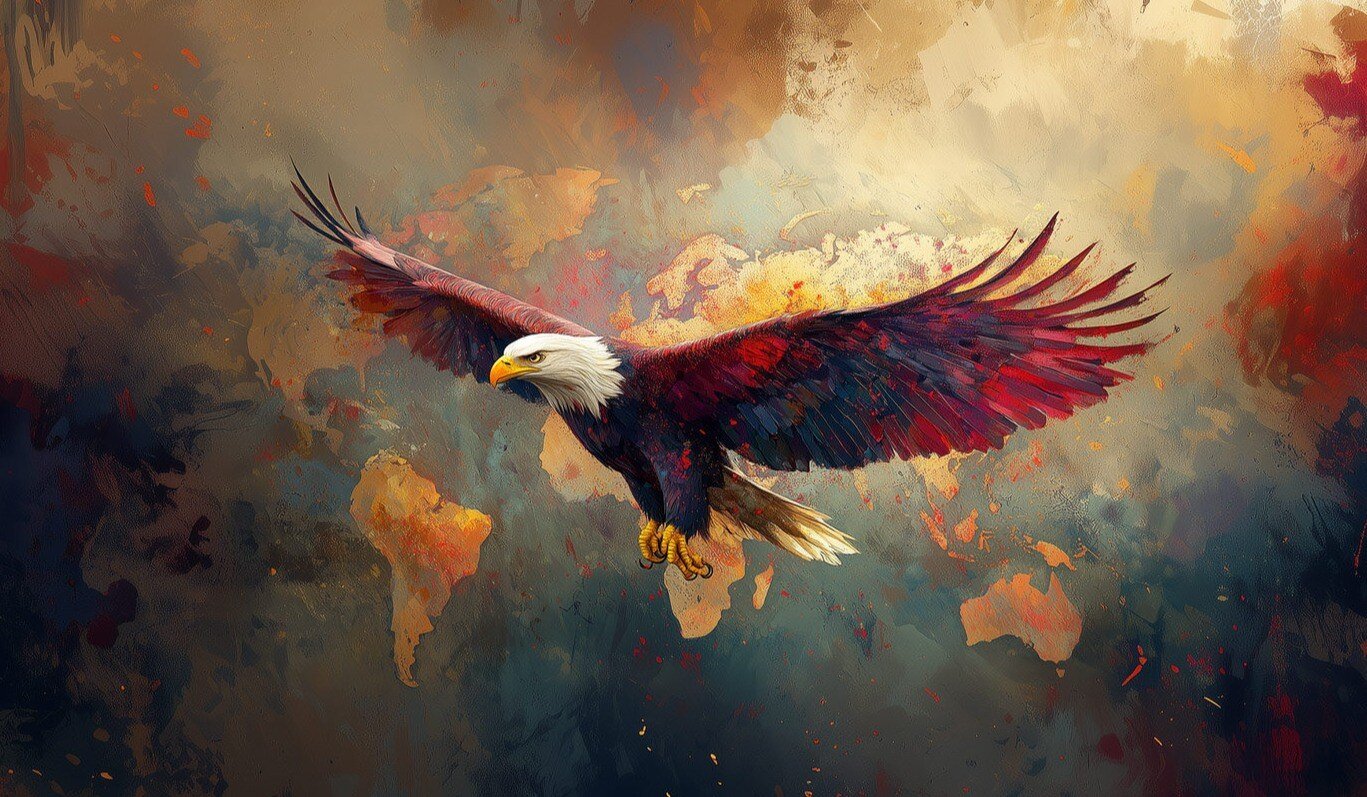
Sloth
Patience, Stillness and Deliberate Living.

Discovering The Sloth Spirit
The sloth is as an emblem of patience, mindfulness, and deliberate living. At the heart of the sloth's symbolism is the essence of intentional stillness. With its unhurried pace and contemplative demeanor, the sloth exemplifies the art of living in the present moment and conserving one's energy.
In its calm and steady approach to life, the sloth becomes a beacon of being present and fully experiencing each moment. The spiritual energy of the sloth teaches us to savor life's experiences and to find beauty in simplicity.
The sloth also represents the journey of introspection. Its relaxed and observant nature reminds us to look inward, to appreciate the peace that comes with understanding oneself, and to value the slow unfolding of our personal growth. The spiritual guidance of the sloth encourages us to find harmony within, to appreciate life's pauses, and to embrace tranquility with open arms.
In addition to patience, mindfulness, and introspection, the sloth's wisdom directs us towards authentic living. With its genuine and unpretentious nature, the sloth serves as a reminder to stay true to ourselves. The spiritual teachings of the sloth inspire us to live with integrity, to honor our unique pace, and to approach life's challenges with grace and perseverance.
Prefer to listen to this article?
Check out our podcast!
Newsletter
Keep reading ↓
- Spirit Animals ↓
- See All
- Alligator
- Anaconda
- Ant
- Arabian Oryx
- Beaver
- Bee
- Beetle
- Black Bear
- Buffalo
- Butterfly
- Camel
- Cat
- Cheetah
- Chimpanzee
- Condor
- Coyote
- Crab
- Dog
- Dolphin
- Dove
- Dragonfly
- Elephant
- Elk
- Emu
- Falcon
- Flamingo
- Fox
- Frog
- Gazelle
- Giraffe
- Goose
- Gorilla
- Grasshopper
- Hawk
- Hedgehog
- Hippopotamus
- Horse
- Hummingbird
- Hyena
- Jaguar
- Kangaroo
- Kiwi
- Koala
- Koi Fish
- Komodo Dragon
- Kookaburra
- Ladybug
- Lamb
- Lemur
- Lion
- Lizard
- Llama
- Manatee
- Mandarin Duck
- Meerkat
- Monkey
- Moose
- Mountain Goat
- Mouse
- Nightingale
- Octopus
- Orca Whale
- Otter
- Owl
- Ox
- Panda
- Panther
- Parrot
- Peacock
- Polar Bear
- Quetzal
- Rabbit
- Raccoon
- Raven
- Rhinoceros
- Rooster
- Salmon
- Sea Turtle
- Seahorse
- Shark
- Sloth
- Snake
- Snow Leopard
- Spider
- Squirrel
- Starfish
- Swan
- Tiger
- Tortoise
- Whale
- Wolf
- Wombat
- Zebra
What Does The Sloth Represent?
The sloth, with its unhurried demeanor and languid movements, is an emblem of patience and introspection. Renowned for its deliberate pace, this unique creature exemplifies the importance of taking one's time and relishing the present moment. Rather than viewing the world in haste, the sloth observes its surroundings with a keen sense of awareness and appreciation. Its energy conservation strategies underscore the value of prioritizing and focusing on what truly matters. In a world that often celebrates speed and urgency, the sloth stands as a gentle reminder of the virtues of stillness, simplicity, and intentionality. Its ability to thrive by adhering to its natural pace teaches us the significance of authenticity and the beauty that lies in embracing one's true nature.
Keep reading ↓
Supporting content
Cultural and Mythological Significance Of The Sloth Spirit
The sloth, while not as prominently featured in global myths and legends as creatures like the lion or eagle, holds a unique and enduring place in the cultures where it resides, primarily in Central and South America.
In some indigenous cultures of the Amazon, the sloth is seen as a guardian of the forest. It's believed that the spirit of the sloth watches over the trees and animals, ensuring harmony. This belief possibly originates from the sloth's symbiotic relationship with its environment, as algae grow on its fur and provide camouflage, and the sloth's diet consists mainly of tree leaves.
Some myths and legends attribute the sloth's slow pace to a form of ancient wisdom. There's a perception that in its deliberate movements, the sloth is in deep contemplation, absorbing the world's secrets. The idea is that the sloth knows something profound that faster animals or humans overlook in their haste.
In modern culture, the sloth has been embraced as a symbol of relaxation, ease, and taking things at one's own pace. It has become an icon of resistance against the relentless pace of modern life, urging us to slow down, be present, and savor each moment.
Additionally, there are tales in certain communities that the sloth's slow movement is a form of meditation, a deep communion with the world around it. This concept aligns with modern-day interpretations of mindfulness and living in the moment.
In summary, while the sloth might not have the widespread mythological presence of some other animals, its cultural significance, especially in regions where it is native, is deeply rooted in themes of harmony with nature, introspection, and the profound wisdom found in stillness.
Keep reading ↓
Supporting content
A Sloth In My Deams
Dreams, rich in symbolism, often provide a mirror to our subconscious mind, addressing our innermost feelings, challenges, or situations we face in waking life. The sloth, with its unique nature and behavior, can offer a multitude of interpretations when it appears in one's dreams. For instance, the sloth's slow and deliberate pace might serve as a nudge, urging you to decelerate in a world that often moves too quickly. It's a reminder to cherish the present moment, to pause and reflect, rather than succumb to the relentless rush of life. Similarly, the contemplative nature of the sloth can hint at a need for introspection, suggesting it might be a time to delve deeper into one's feelings, desires, or fears. However, not all interpretations lean towards the positive. A sloth might also underscore feelings of inertia or stagnation, spotlighting areas in life where motivation wanes, or progress seems stagnant.
The animal's profound connection to nature might be a call to strengthen your bond with the natural world, emphasizing the necessity of harmony and balance in life. And, given the vulnerability the sloth experiences when on the ground, its presence in a dream could echo feelings of exposure or vulnerability in certain situations in your day-to-day life. As with all dream imagery, personal context and the emotions accompanying the dream play a pivotal role in interpretation. The appearance of the sloth could be directing your attention to specific facets of your life needing introspection, change, or care.
Delving deeper into its natural behaviors, the crab's tendency to burrow or hide might be emblematic of concealed emotions, untapped potential, or deep-seated secrets. If the dream crab exhibits aggression, it might be a reflection of underlying conflicts or tensions in your waking life. However, personal experiences and associations play a pivotal role in interpretation; a childhood memory, a recent encounter, or a cultural story about crabs can shape the dream's significance uniquely for the dreamer. Reflection on individual emotions and life situations can shed light on why such symbols materialize in our subconscious realm.
Keep reading ↓
Habitat, Behaviours and Ecological Importance Of The Sloth
Habitat:
The sloth predominantly inhabits the lush rainforests of Central and South America. These dense canopies serve as a verdant sanctuary for the sloth, providing both food and protection. Suspended high among the treetops, sloths navigate this vertical world with impressive agility, despite their reputation for slow movement. They rely on the abundant leaves for sustenance, with certain species displaying a preference for particular types of trees. The sloth's fur also serves as a mini-ecosystem in itself, hosting various species of algae and insects. This symbiotic relationship not only offers the sloth a form of camouflage but also nourishes the algae, with the moist, humid rainforest environment creating the perfect conditions for such interactions. The interconnectedness of the sloth with its habitat underscores the delicate balance of rainforest ecosystems and the importance of their preservation.
Behaviours:
- Slow Movement: Perhaps the most defining characteristic of the sloth is its exceptionally slow movement. Due to their low metabolic rate and a diet primarily of leaves, which don't provide much energy, sloths move at a languid pace. This slow movement aids in conserving energy and helps them remain inconspicuous to predators.
- Vertical Living: Sloths are uniquely adapted to a life suspended upside down from tree branches. Their limbs have long claws that hook onto branches, allowing them to hang effortlessly. Even activities like eating, sleeping, and giving birth often occur while they're hanging upside down.
- Camouflaging Fur: Sloths have a unique symbiotic relationship with algae that grow on their fur. This gives them a greenish tint, which acts as camouflage against the green backdrop of the rainforest. This relationship is further enriched by the many insects, particularly beetles, that inhabit the sloth's fur, making them a moving ecosystem.
- Infrequent Ground Visits: Although sloths are arboreal and spend the majority of their lives in trees, they descend to the ground about once a week. This is primarily to defecate, and it's one of the most vulnerable times for the sloth, as they're more exposed to predators.
- Solitary Nature: Sloths are primarily solitary animals. Outside of mating periods or a mother raising her young, sloths prefer to spend their time alone. Their solitary behavior minimizes competition for resources and reduces the chance of attracting predators.
Ecological Importance:
Sloths play a vital role in the ecological health and balance of the rainforests they inhabit. Their unique fur, which hosts a myriad of algae and insects, serves as a micro-ecosystem, promoting biodiversity right on their bodies. As they move languidly through the canopy, they facilitate the dispersal of these organisms, enhancing the intricate web of life in these dense forests. Moreover, by consuming vast quantities of leaves, sloths aid in the process of nutrient cycling. As they digest these leaves, they extract nutrients and then return them to the forest floor in the form of waste, nourishing the soil and ensuring the continuous growth of vegetation. Additionally, by acting as prey for large predatory birds and big cats, sloths help maintain the delicate predator-prey balance in the rainforest ecosystem.
Keep reading ↓
How the Sloth Contributes To Scientific Research
Known for their slow metabolism and minimal energy expenditure, sloths provide researchers an opportunity to study metabolic adaptations and energy conservation strategies that have allowed these creatures to thrive in their specific niches. Their distinct fur, which often houses various algae and microorganisms, presents a fascinating ecosystem that can be studied to understand symbiotic relationships and potentially discover new microbial species. The evolutionary trajectory of sloths, which includes both the extant slow-moving species and their giant, prehistoric relatives, also offers a window into understanding evolutionary pressures and morphological changes over time. Overall, the sloth serves as a compelling model organism, shedding light on the intricacies of adaptation, co-evolution, and ecological balance.
Keep reading ↓
Guided Visualization To Connect With The Sloth Spirit
Complement your ritual with...
Binaural beats!
- Find a quiet sanctuary where distractions fade, and settle into a relaxed position, either sitting or lying down.
- Close your eyes and breathe deeply, letting the world's clamor dissolve with each exhalation.
- Imagine yourself at the entrance of a lush, green rainforest. With each step you take into this verdant world, you're surrounded by the melodic songs of birds and the soothing sound of distant waterfalls. The cool, fragrant air caresses your skin, inviting you deeper into the heart of nature.
- As you wander, you're drawn to an ancient tree standing majestically, its branches offering a gentle embrace. Nestled within, a sloth catches your gaze, its eyes radiating peace and timelessness.
- Visualize a soft, green light emanating from the sloth, wrapping around you, its serene energy merging with yours. Within this cocoon of tranquility, open your heart to the messages the sloth spirit shares—perhaps a nudge to savor life's moments, to rediscover nature, or to simply be.
- As this communion draws to a close, let gratitude fill your heart, thanking the sloth for its wisdom. Gradually, trace your steps back through the forest, feeling more grounded with every step.
- As you re-enter your surroundings, take a few centering breaths, and when you're ready, let the world greet your eyes, bringing with you the calm and lessons of the sloth.
Shop
Connect with the essence of our Spirit Animals!

Beach Towel
Buy Now

Sherpa Blanket
Buy Now

Flag Wall Art
Buy Now

Oracle Decks
Buy Now
From Our Blog
Stay up to date with our latest articles!

What Leadership Really Means (And What We’re Forgetting)

Brains, Hearts & Bold Moves with Lara Stalquist

What’s Really Worth Stressing About? Reclaiming Your Peace In A World That’s Always “On”
Please note:
It is crucial to acknowledge that the symbology and interpretations can differ greatly among various cultures, religious ideologies, and individual viewpoints. The significance and comprehension of these spirit animals may vary depending on the particular mythological backdrop or the spiritual and philosophical framework through which they are approached. The descriptions of these Oracle Cards are based on information gathered from various sources. Our aim is to provide an overview and a fictional interpretation and we cannot guarantee the accuracy or completeness of this information. The artwork featured on these Oracle Cards have been crafted by digital artists and designers, Relmi Damiano and Sacha Damiano, in conjunction with Artificial Intelligence that has been enhanced by human intervention. The visual imagery serves as a fictional representation of some of the symbols associated with these goddesses throughout history.

